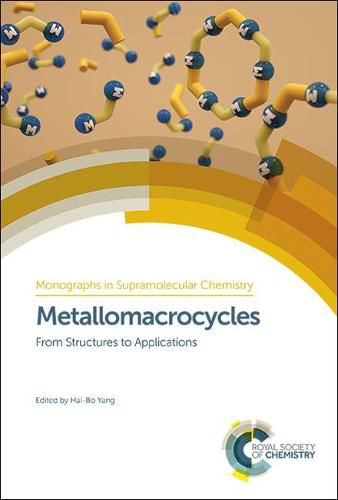Readings Newsletter
Become a Readings Member to make your shopping experience even easier.
Sign in or sign up for free!
You’re not far away from qualifying for FREE standard shipping within Australia
You’ve qualified for FREE standard shipping within Australia
The cart is loading…






The metal-ligand coordination of metallomacrocycles allows for the production of both discrete and infinite metallosupramolecular structures with high-degrees of complexity. In recent years, coordination-driven self-assembly has emerged as a powerful noncovalent synthetic strategy to build discrete supramolecular architectures with diverse coordination moieties such as a well-defined shape, size, and geometry. The dynamic features of the metal-ligand bonds result in structures with intriguing properties allowing for a diverse range of applications in host-guest chemistry, sensing, drug delivery and catalysis.
This book provides a comprehensive summary of current research in metallomacrocycles. Starting with an introduction to metallomacrocycles constructed via coordination-driven self-assembly, the book then goes on to explore design principles and self-organization. Subsequent chapters then discuss examples of complex and functional metallosupramolecular systems based on metallomacrocycles such as chiral systems and mechanically interlocked architectures. Finally, the book discusses the applications of metallomacrocycles.
An essential resource for students and researchers looking to design and construct new metallosupramolecular systems and extend their applications in biological and materials science.
$9.00 standard shipping within Australia
FREE standard shipping within Australia for orders over $100.00
Express & International shipping calculated at checkout
The metal-ligand coordination of metallomacrocycles allows for the production of both discrete and infinite metallosupramolecular structures with high-degrees of complexity. In recent years, coordination-driven self-assembly has emerged as a powerful noncovalent synthetic strategy to build discrete supramolecular architectures with diverse coordination moieties such as a well-defined shape, size, and geometry. The dynamic features of the metal-ligand bonds result in structures with intriguing properties allowing for a diverse range of applications in host-guest chemistry, sensing, drug delivery and catalysis.
This book provides a comprehensive summary of current research in metallomacrocycles. Starting with an introduction to metallomacrocycles constructed via coordination-driven self-assembly, the book then goes on to explore design principles and self-organization. Subsequent chapters then discuss examples of complex and functional metallosupramolecular systems based on metallomacrocycles such as chiral systems and mechanically interlocked architectures. Finally, the book discusses the applications of metallomacrocycles.
An essential resource for students and researchers looking to design and construct new metallosupramolecular systems and extend their applications in biological and materials science.